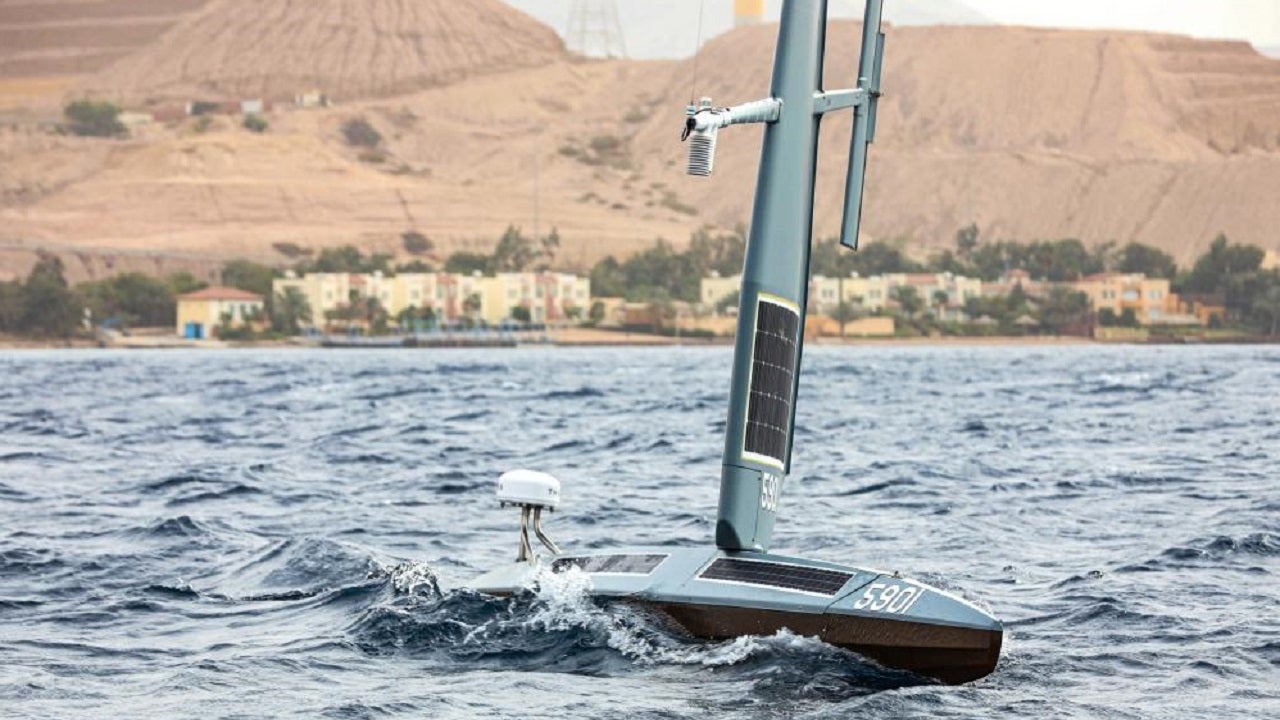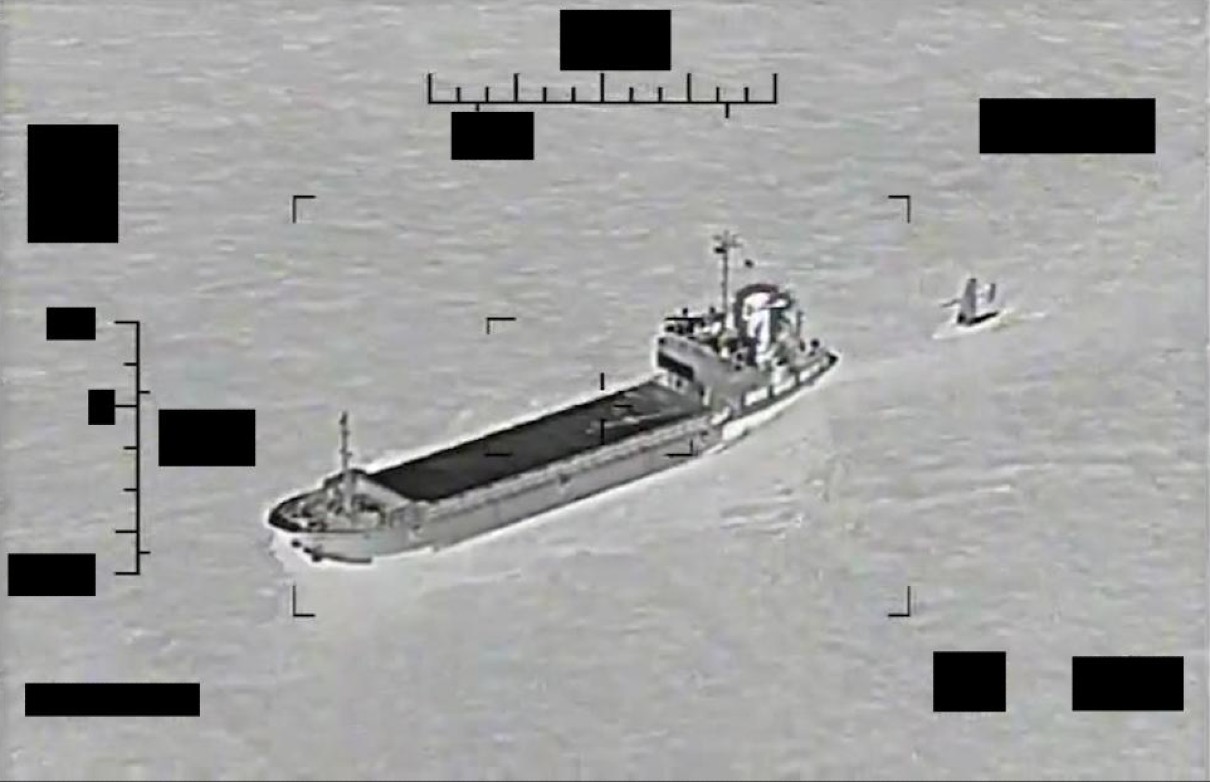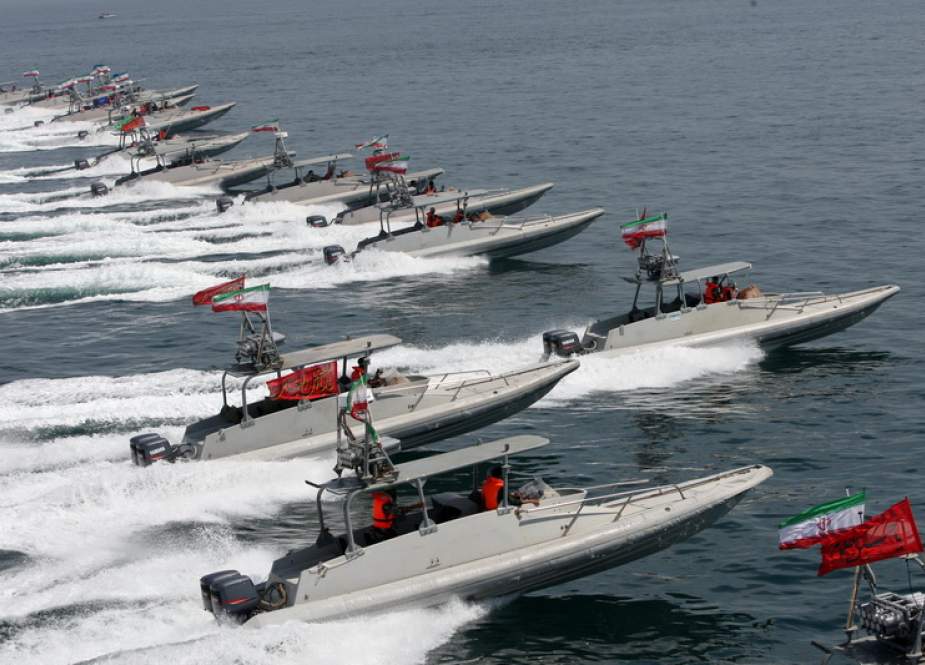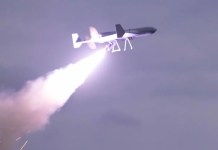On August 30, the US Navy announced that it had successfully thwarted Iran’s Revolutionary Guard Corps (IRGC) attempt to seize one of its uncrewed surface vessels in the Persian Gulf.
In a statement, US Naval Forces Central Command said that at approximately 11 pm local time on August 29, US 5th Fleet was transiting through international waters when they saw the IRGC support ship Shahid Baziar towing the Saildrone Explorer “in an attempt to detain it.”
According to the US Navy, the USS Thunderbolt, a coastal patrol ship, was nearby and acted immediately to the incident. The 5th Fleet also dispatched an MH-60S Sea Hawk from Bahrain-based Helicopter Sea Combat Squadron 26.
In a video made public by the US Navy, the Cyclone-class patrol ship USS Thunderbolt follows the drone while it is hauled away by the support ship Shahid Baziar.
The IRGCN vessel severed the towing line from the USV and allegedly left the area without any additional issues following what the Navy claims to have been a four-hour exchange.
The IRGC’s “actions were flagrant, unwarranted, and inconsistent with the behavior of a professional maritime force,” Vice Adm. Brad Cooper, commander of US Naval Forces Central Command, US 5th Fleet and Combined Maritime Forces, said in a statement.
“US naval forces remain vigilant and will continue to fly, sail and operate anywhere international law allows while promoting rules-based international order throughout the region,” Cooper added.
Gen. Michael Kurilla, Commander of US Central Command (CENTCOM), said that “the professionalism and competence of the crew of the USS Thunderbolt prevented Iran from this illegal activity. This incident demonstrates Iran’s ongoing destabilizing, illegal, and unprofessional activity in the Middle East.”

The Navy’s 5th Fleet deploys various unmanned systems, including the solar-powered Saildrone Explorer USV. In 2021, Saildrone was launched on its first mission in the Gulf of Aqaba at the northern end of the Red Sea.
The mission was managed by Navy personnel assigned to Task Force 59, one of the nine task forces that now function under the Navy’s 5th Fleet, as part of a demonstration exercise known as Digital Horizon.
Task Force 59 primarily focuses on operating unmanned systems to help build improved maritime domain awareness by fusing sensors and unmanned technology for more powerful intelligence-gathering capabilities.
The wind propels the boat, but a pilot can oversee it in real-time and send directional instructions via satellite link.
To reduce the possibility of colliding with other vessels, it also has four onboard video cameras, a radar reflector, an automatic identification system (AIS) transceiver, and an automatic identification system (AIS) transceiver.
It is believed that the Navy had noticed the vessel’s odd maneuvers, prompting the 5th Fleet’s response. However, given very few details included in the Navy’s statement, it is unclear whether such was the case.
It’s also crucial to note that the Navy clearly said in their release that the Saildrone is US government property outfitted with sensors, radars, and cameras. However, its components for navigation and data collecting are commercially accessible technology. Therefore, the IRGCN would receive minimal intelligence advantage from stealing the drone ship.

Past Incidents
The IRGC has occasionally clashed with the US Navy and Coast Guard. In the past, IRGC fast-attack boats have approached US ships, causing the military to take precautionary measures, including firing warning shots and radio alerts.
In 2019, Iran downed a Navy Global Hawk, and the US had to decide how to respond to an attack on an aircraft that resulted in no losses or prisoners taken.
Although this incident entailed the actual destruction of US government property, making it considerably different from the Saildrone incident, it nonetheless raised concerns about choosing a proportionate response.
Meanwhile, the Iranian military has also seized naval equipment from other countries. In the Strait of Hormuz, the IRGCN detained a tanker ship bearing South Korea’s flag carrying 7,200 tons of “oil-based chemicals.”

Later, the IRGCN claimed that the seizure occurred due to a request made by the nation’s Ports and Maritime Organization following a warrant issued by the prosecutor’s office of the coastal Hormozgan province for breaking environmental norms.
Nevertheless, the latest event highlighted the danger that hostile nations may pose to unmanned vehicles.
In 2016, crew members from the Chinese Nan-Jiu, a rescue, and salvage ship of the Dalang III class, launched a small boat, pulled one of the two American low-buoyancy underwater glider drones out of the water, and brought them back to the ship for examination.
The USNS Bowditch (T-AGS-62) of the Pathfinder class, which was nearby as the drones were being recovered, observed the whole event. The equipment was returned to the US Navy after China issued a statement stating that it had been seized to prevent it from endangering the safety of passing ships and crew.
The latest episode proved how easy it might be for adversarial countries to hijack, intercept, or even deactivate an unmanned system if they are inclined to do so.
- Contact the author at ashishmichel@gmail.com
- Follow EurAsian Times on Google News




